 Arnold & Marlene Derstine, Franconia Mennonite Church
Arnold & Marlene Derstine, Franconia Mennonite Church
It’s hard to believe that 15 years have passed since our congregation first began to relate to our sister church in Puebla, Mexico. Little did we know that what began as an initiative of Franconia Mennonite Conference and the Conference of Mennonite Churches in Mexico would eventually become a thriving relationship between our two congregations.
Last week a group of 6 persons from our congregation (Pastor John Ehst, Bill Gotwals, Alex and McAllister Tellado, David Landis, Arnold and Marlene Derstine) attended the anniversary weekend of our sister church. This annual celebration of God’s faithfulness in the life of the church seemed an appropriate setting to also recognize and celebrate 15 years of walking beside each other as congregations. It was a time to both reminisce about the past as well as dream about the future.
Initial conversations with the Maranatha congregation began in 1992. In the spring of 1993, the first of many exchange visits took place. A team of four persons from Franconia went to work along side our Mexican brothers and sisters who had recently purchased a new property for the church. Over the years many from our congregation have been encouraged and blessed as the chorus, young adults, youth teams and mixed groups have had the privilege of visiting with Maranatha and participating in the life and ministry of their congregation. Throughout the years we have also been blessed to receive groups from Maranatha through which many significant relationships have been established.
 Our weekend together was a significant reminder of the many meaningful relationships that have developed and grown over the last 15 years. It was also a reminder that our relationship together actually began long before the sister relationship emerged.
Our weekend together was a significant reminder of the many meaningful relationships that have developed and grown over the last 15 years. It was also a reminder that our relationship together actually began long before the sister relationship emerged.
Perhaps the most meaningful part of the Sunday morning celebration was giving thanks for and recognizing the dedication and service of faithful leaders both past and present. It was a blessing to have David and Shirley Yoder there with us. David and Shirley are the original church planters of Maranatha. The congregation was moved as David expressed the overwhelming joy he and Shirley experienced in coming back to the church for the first time in 35 years and witnessing God’s faithfulness in bringing forth fruit from the seeds that were sown.
Maranatha is indeed a congregation that has come a long way since the early 1960’s when David and Shirley used the living room of their home as a chapel for Sunday morning services and weekly bible studies. On this Sunday the auditorium was full of people and praise as we celebrated God’s faithfulness together through inspiring worship, prayer and hearing God’s word.
It was encouraging to reflect on how God has brought us together – two congregations with distinct cultures but the same vision and desire to be salt and light here on earth. Throughout the weekend we took time to think, dream and pray about our future together as partners in the Gospel. We look forward to how God will continue to use this relationship to further His kingdom.


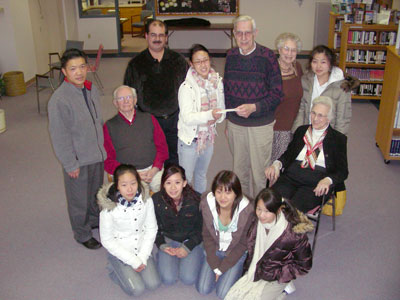 Presentation of $1,000.00 from the Korean Youth Group to the Worm Project
Presentation of $1,000.00 from the Korean Youth Group to the Worm Project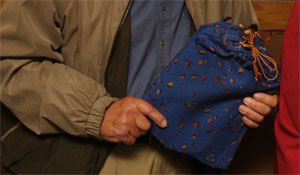 by Christine Charnosky, The Reporter
by Christine Charnosky, The Reporter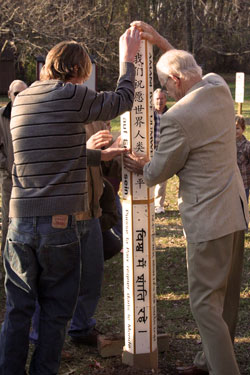 Ranck said she heard a story about a person who came to the United States and years before had received a health kit. “The person still had the bag because it had become a symbol of hope for them,” she said. She and some church members toured the MCC warehouse in Ephrata, Lancaster County, last month.
Ranck said she heard a story about a person who came to the United States and years before had received a health kit. “The person still had the bag because it had become a symbol of hope for them,” she said. She and some church members toured the MCC warehouse in Ephrata, Lancaster County, last month.
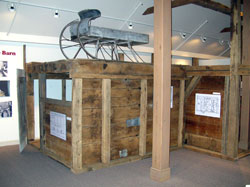 The Mennonite Heritage Center, 565 Yoder Road, Harleysville, announces a new exhibit As Large as Palaces: Pennsylvania German Barns. The exhibit focuses on the history, functions, and architecture of the beautiful nineteenth century Pennsylvania German barns in southeastern Pennsylvania. As Large as Palaces features a reconstruction of an original barn’s threshing floor and bents (or framing sections), along with a granary and a recreation of cow stable from the lower level of a barn. Vintage barn photographs and diagrams of barn architecture, as well as examples of 19th century farm tools and equipment show how barns were designed to house animals and provide for crop processing and storage. The exhibit will run until October 29, 2007.
The Mennonite Heritage Center, 565 Yoder Road, Harleysville, announces a new exhibit As Large as Palaces: Pennsylvania German Barns. The exhibit focuses on the history, functions, and architecture of the beautiful nineteenth century Pennsylvania German barns in southeastern Pennsylvania. As Large as Palaces features a reconstruction of an original barn’s threshing floor and bents (or framing sections), along with a granary and a recreation of cow stable from the lower level of a barn. Vintage barn photographs and diagrams of barn architecture, as well as examples of 19th century farm tools and equipment show how barns were designed to house animals and provide for crop processing and storage. The exhibit will run until October 29, 2007.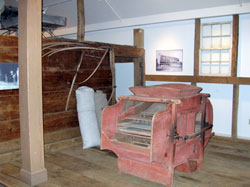 Farm life centered around the barn and family members spent many hours milking cows, feeding animals, assisting with calving, loading and unloading hay, and threshing grain. Throughout the eighteenth and nineteenth centuries, agriculture thrived, grew, and changed but the barn remained the hub of farm life. Increasing mechanization and sanitary standards brought more changes to farming in the twentieth century and barns were renovated to deal with the changing times. Stanchions and cement floors replaced wooden stables and earthen floors. Milking machines and farm machinery increased production and decreased some of the grueling hand labor but many people still have memories of going out to the barn to milk on an icy winter morning or of unloading hay in the heat of the summer.
Farm life centered around the barn and family members spent many hours milking cows, feeding animals, assisting with calving, loading and unloading hay, and threshing grain. Throughout the eighteenth and nineteenth centuries, agriculture thrived, grew, and changed but the barn remained the hub of farm life. Increasing mechanization and sanitary standards brought more changes to farming in the twentieth century and barns were renovated to deal with the changing times. Stanchions and cement floors replaced wooden stables and earthen floors. Milking machines and farm machinery increased production and decreased some of the grueling hand labor but many people still have memories of going out to the barn to milk on an icy winter morning or of unloading hay in the heat of the summer.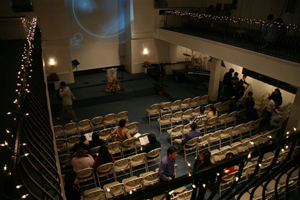 by Rachel Howe
by Rachel Howe 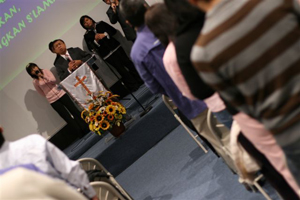 I am actually part of that prayer. I came to PPC in September of 2006 and immediately felt the presence of the Lord. The congregation welcomed me with open arms and has not let go. God’s passion is evident in everyone. It does not matter what language you speak. I have learned so much from sitting, listening and watching.
I am actually part of that prayer. I came to PPC in September of 2006 and immediately felt the presence of the Lord. The congregation welcomed me with open arms and has not let go. God’s passion is evident in everyone. It does not matter what language you speak. I have learned so much from sitting, listening and watching.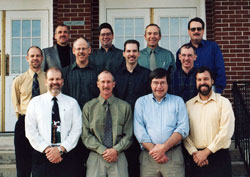 Deep Run Mennonite Church East (
Deep Run Mennonite Church East (